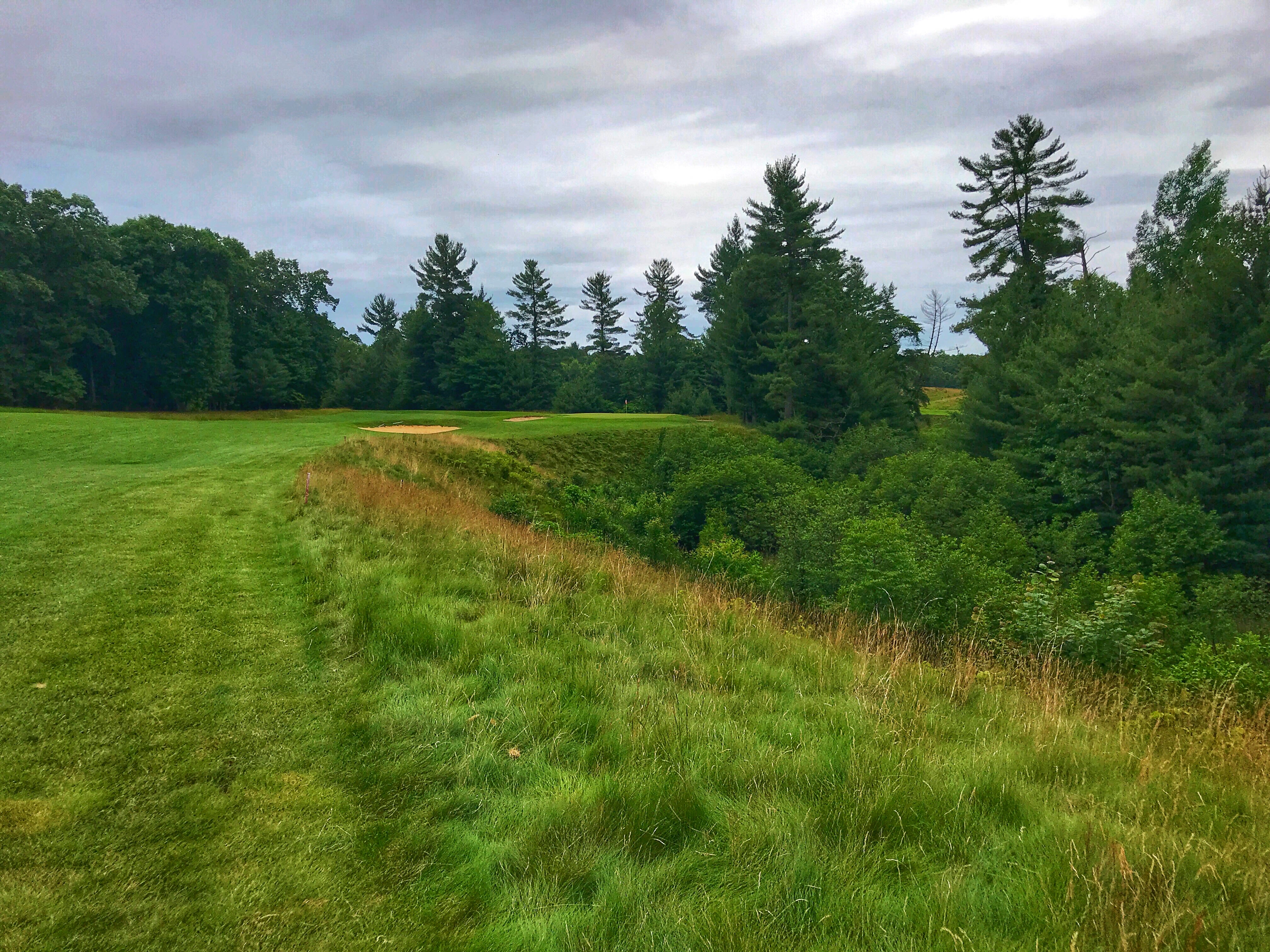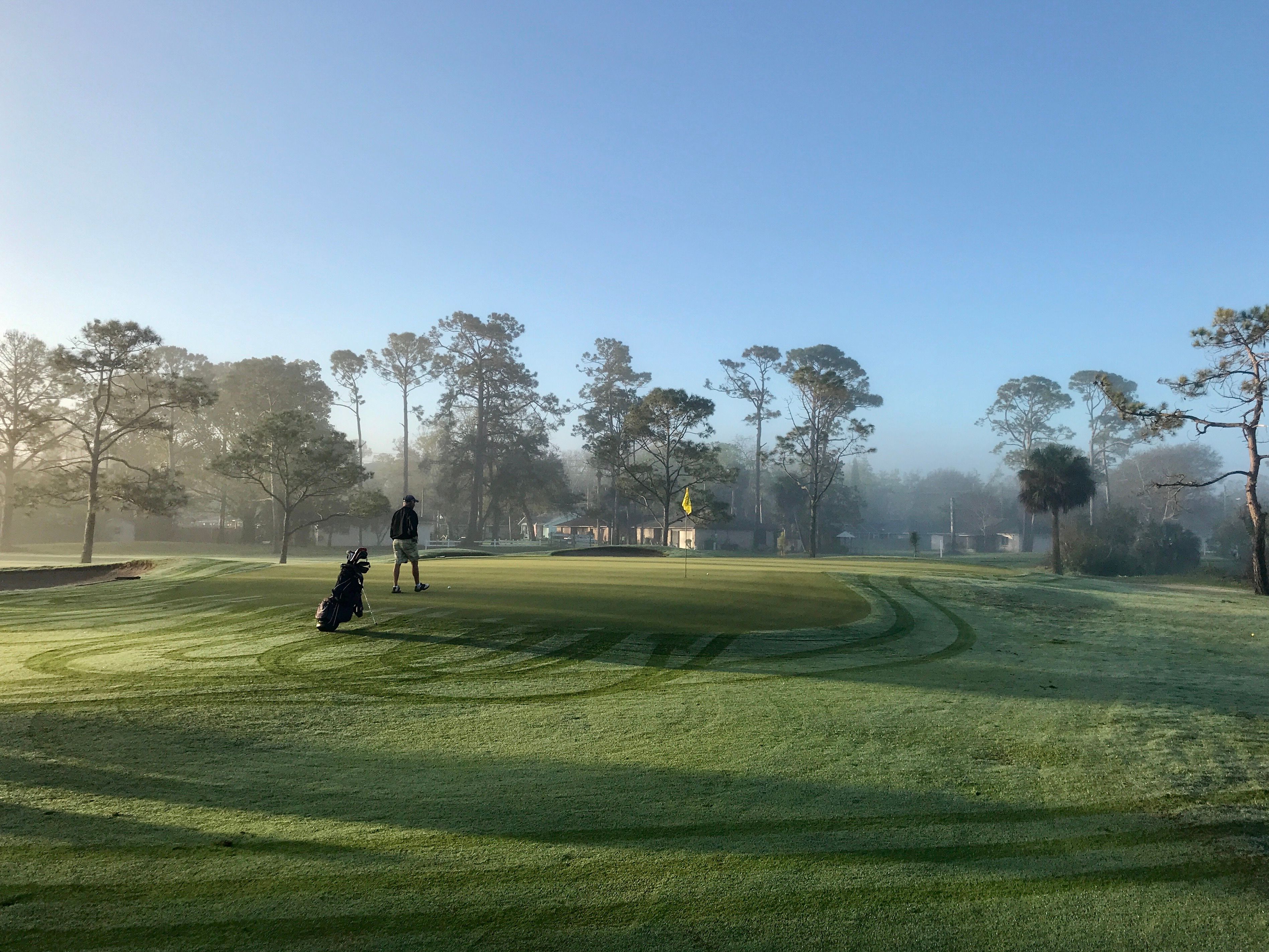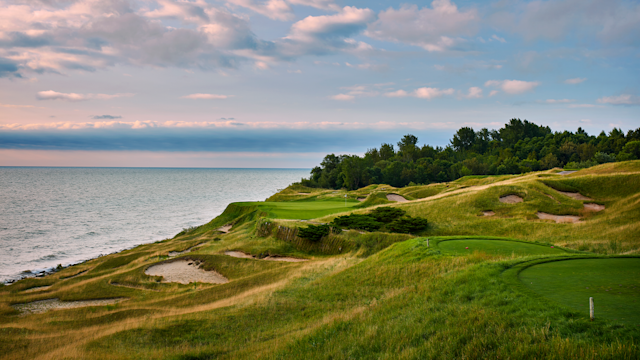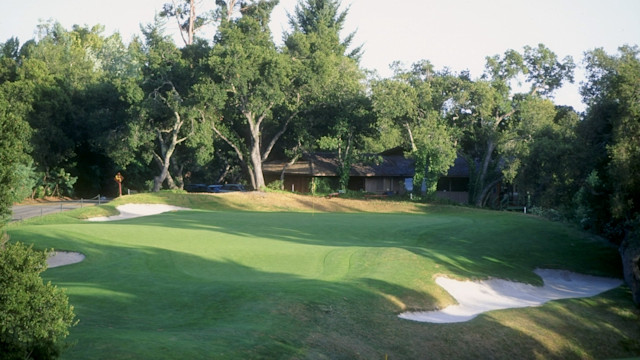Course Spotlight
Five Magical Golf Course Designs You Need to Experience
By Tim Gavrich
Published on

The finishing hole at Michigan's Diamond Springs. (Larry Lambrecht/DeVries Designs, Inc.)
One of my favorite poems is “Nirvana,” written by Charles Bukowski. In it, an unnamed young man on a bus trip finds himself on a pit stop at “a little café in the hills.” In the midst of a dreary, snowy trip, he finds himself overwhelmed by how happy the experience makes him, all the elements of it coming together taking him by surprise: the food, the waitress, the fry cook, the dishwasher. “[T]he curious feeling swam through him that everything was beautiful there,” writes Bukowski. “[T]hat it would always stay beautiful there.”
Back on the bus, the young man notices the other passengers don’t appear to be as moved by the experience in the café as he. “[T]hey had not noticed the magic,” Bukowski writes.
In my own travels, I have felt that sweet feeling captured in “Nirvana” several times, not just at restaurants but at golf courses, too. Some of them have so comprehensively exceeded my expectations that the overall experience of visiting them has felt almost magical. Just as in the poem, it’s some sort of alchemy of several factors that creates the magic.
Here are a few places where I’ve felt that feeling:
San Vicente Golf Resort – Ramona, Calif.

The third hole at San Vincente. (Tim Gavrich/GolfPass)
About 45 minutes northeast of San Diego, San Vicente is tucked into the hills above the farming community of Ramona. The course first opened 50 years ago. During the height of the coronavirus pandemic, golf course architect Andy Staples took a competent routing and breathed tremendous life into the most important aspects of it: the greens and the bunkers. Each putting surface has all sorts of interesting contours and pin positions ranging from inviting to cheeky, and the rustic-edged bunkers look like they’ve been carefully preserved for a century. Those facts alone were enough to ensure I enjoyed my December 2022 round, but the fact that I enjoyed the course on foot on a chilly morning alongside a local who had recently taken up golf and was clearly in the midst of falling head-over-heels in live with the game took the experience to another level. The fact that San Vicente’s green fees top out around $70 is mind-blowing; the course would be a must-play at more than double that tariff.
Salem Golf Club – Salem, Ore.
To a Connecticut Yankee who now lives in Florida, there is something mysterious and majestic about the Pacific Northwest. Between the vastness of the land expanse, the density of the forests and notions about the size of those forests’ trees, it has always had an exotic appeal. As soon as I pulled into the parking lot of Salem Golf Club, I was smitten. The golf course is not a world-beater, and it was covered with leaves and twigs from a blustery and wet previous 24 hours, but the simplicity of the design and the stateliness of the tall, skinny firs lining many of the fairways made it feel almost regal – like I was playing on some eccentric baron’s private property. Back in the cozy locker room, decades’ worth of memorabilia, including a signed photo from Ben Hogan and a state high school golf championship trophy from 1932, gave me the sense that a great deal of love and memories swirl all around the property.
Diamond Springs Golf Course – Hamilton, Mich.

No.16 at Diamond Springs. (Tim Gavrich/GolfPass)
The magic of Diamond Springs, half an hour south of Grand Rapids, is primarily about the golf course, but two different aspects of it. The first is the design – architect Mike DeVries took full advantage of a wonderful piece of property, draping a fun mix of golf holes across it that rely not on shaping and flash but solid golf values and a wonderful set of greens. The other aspect was the simplicity of how the golf course is maintained. Instead of all the different heights of cut you would expect to see at a fancy private club or upscale resort, Diamond Springs has just two: greens and tee boxes flow directly into fairways, all maintained at around half an inch. Everything else is native grass and fescue, which provides exterior definition to each hole without over-penalizing players who stray a bit from the short stuff. It’s hard to envision a much better sub-$60 golf course than Diamond Springs.
Grand Beach Golf Course – Grand Beach, Mich.
Until someone invents a time machine, playing golf at places like Grand Beach – a Tom Bendelow 9-holer barely touched since it opened in 1912 – will have to do. As soon as I set foot in the tiny shack of a golf shop and a young lady took my out-of-towner green fee of $13.50 (locals pay 50 cents less) right after scooping ice cream for four local kids in their bathing suits, I knew I was someplace special. The feeling grew when, after setting off to walk the course by myself, two residents of the surrounding village who happened to both be lefties like me, invited me to play with them. One of them tossed my clubs on the back of his cart, a black-and-orange Harley-Davidson-branded beauty from the 1970s. The magic was fully confirmed as we finished our late-afternoon loop on the course’s closing two holes: back-to-back blind par 3s.
Riviera Country Club – Ormond Beach, Fla.

A Florida gem: Riviera Country Club. (Tim Gavrich/GolfPass)
When you hear a golf course does not assign tee times, the fair assumption is that it is an exclusive private club whose membership is so small that it isn’t necessary to reserve them. After all, how could a busy course – much less one open to the public – juggle the demand properly? I still don’t understand how longtime PGA Head Professional Mike Boss (now retired) and his lieutenants have been doing it for decades at this family-owned course near Daytona Beach, but it works. “The Riv,” which dates back to 1953, is midcentury-modern golf at its simplest. The flat, tree-lined fairways rise up to well-built elevated greens that have subtle rolls ready to shrug off short-sided approaches, and while it’s not a long course at around 6,300 yards from the tips, it’s not a pushover, even when it hosts the annual Riviera Open, a mini-tour event that dates to 1960. Locals love the place, as do visitors and snowbirds who are lucky enough to stumble on it and pay less than $55 for the privilege.
Tim Gavrich is a Senior Writer for GolfPass, where he covers travel, architecture, equipment and more.


